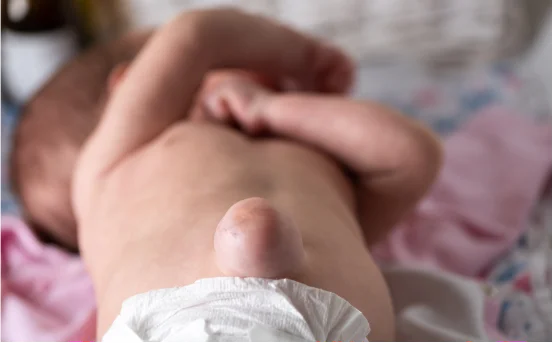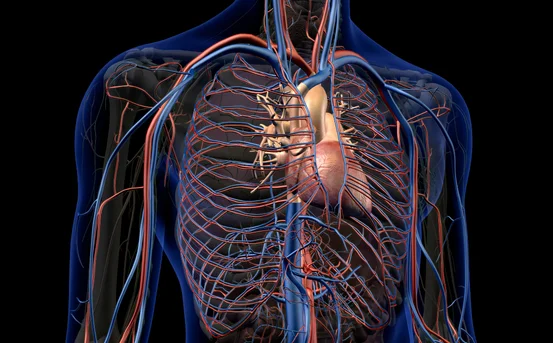What is pediatric hernia repair surgery, it is a common and generally safe procedure performed in children to correct hernias abnormal protrusions of tissue or organs through a weak spot in the abdominal wall. Though hearing that your child needs surgery can be stressful, understanding the condition, treatment options, and recovery process can help you feel more confident and prepared.
In simple terms, a hernia occurs when an internal organ or tissue pushes through a weak spot in the muscle or surrounding wall. While hernias can happen to people of all ages, children especially newborns and infants are particularly susceptible due to developmental factors during pregnancy. Some hernias may appear soon after birth, while others might not become noticeable until the child begins to cry, cough, or strain.
What is Pediatric Hernia Repair Surgery in Children?
A hernia occurs when a portion of an organ or tissue pushes through an opening or weak spot in the muscle or surrounding tissue wall. In children, hernias are usually congenital, meaning they are present at birth due to the incomplete closure of certain areas during fetal development.
Types of Pediatric Hernias
The most common types of hernias seen in children include :-
Inguinal Hernia
-
Occurs in the groin area when a part of the intestine protrudes through the inguinal canal.
-
More common in boys, especially premature infants.
-
Can appear on one or both sides of the groin.
Umbilical Hernia
-
Occurs near the belly button when the abdominal wall does not close properly.
-
Common in newborns and usually resolves on its own by age 3–4.
-
Surgery is needed if it persists beyond age 4 or becomes painful.
Epigastric Hernia
-
Appears as a lump between the breastbone and the belly button.
-
Caused by a weakness in the upper abdominal wall muscles.
-
Surgery is often recommended if the hernia is painful or growing.
Symptoms of Pediatric Hernias
Hernias in children are typically painless but can present with :-
-
A visible bulge or lump in the groin, belly button, or upper abdomen
-
Bulge becomes more noticeable when crying, coughing, or straining
-
Discomfort or pain, especially during physical activity
-
Nausea or vomiting (in rare cases of incarcerated hernia)
-
Swelling and redness in the hernia area (possible emergency)
Incarcerated or strangulated hernias (where tissue becomes trapped and blood supply is cut off) are medical emergencies and require immediate surgery.
Diagnosing a Hernia in Children
Diagnosis typically includes :-
-
Physical examination :- A pediatric surgeon or pediatrician can often identify a hernia by sight and touch.
-
Ultrasound or imaging tests :- May be used to confirm the diagnosis or evaluate complications.
-
Medical history :- Doctors may ask about the duration, appearance, and symptoms associated with the bulge.
When Is Pediatric Hernia Repair Surgery Recommended?
Surgical repair is almost always recommended for inguinal hernias in children, even if they are not causing discomfort, because of the risk of incarceration.
For umbilical hernias, surgery is recommended if :-
-
The hernia persists beyond the age of 4–5
-
The hernia is large or symptomatic
-
There is pain or incarceration
Epigastric hernias are typically treated surgically to prevent complications.
Pediatric Hernia Repair Surgery: Overview
Surgical Approach
There are two main types of surgical techniques :-
- Open Surgery
-
A small incision is made near the hernia site.
-
The herniated tissue is gently pushed back.
-
The muscle wall is reinforced, and the incision is closed with sutures.
- Laparoscopic Surgery
-
Minimally invasive approach using small incisions.
-
A thin tube with a camera (laparoscope) guides the surgeon.
-
Often used in older children or in recurrent hernia cases.
Note :- The choice between open and laparoscopic surgery depends on the child’s age, type of hernia, and the surgeon’s recommendation.
Anesthesia :- Pediatric hernia repair is performed under general anesthesia. Your child will be asleep and feel no pain during the procedure.
- Duration
-
Most hernia surgeries take 30 minutes to 1 hour.
-
It is usually a day-care procedure, meaning the child can go home the same day.
Recovery After Pediatric Hernia Surgery
Immediate Post-Operative Care :-
-
Your child will be monitored in a recovery room after surgery.
-
Mild discomfort or grogginess from anesthesia is normal.
-
Pain is typically mild and managed with over-the-counter medications.
At-Home Recovery :-
-
Most children resume normal activities within 3 to 7 days.
-
Avoid strenuous activity and rough play for about 2–4 weeks, depending on the surgeon’s advice.
-
Keep the incision area clean and dry.
-
Follow-up appointment is usually scheduled within a week.
Risks and Complications
Hernia repair surgery in children is very safe, with a high success rate. However, like any surgical procedure, there are some risks :-
-
Infection at the surgical site
-
Bleeding or hematoma
-
Swelling or bruising
-
Recurrence of the hernia (rare)
-
Reaction to anesthesia
Severe complications are extremely rare, especially when performed by an experienced pediatric surgeon.
Long-Term Outlook
The prognosis after pediatric hernia repair surgery is excellent. Most children recover fully and never experience a recurrence. With proper post-operative care, the risk of complications is minimal, and your child can return to normal life quickly.
Tips for Parents: Preparing for Surgery
-
Ask questions :- Don’t hesitate to ask the surgeon about the procedure, risks, and recovery.
-
Explain the process to your child (in age-appropriate terms) to ease anxiety.
-
Pack comforting items like a favorite toy or blanket for the hospital visit.
-
Follow pre-surgery instructions, such as fasting requirements, provided by your doctor.
Conclusion
Pediatric hernia repair surgery is a straightforward and highly effective procedure that can prevent serious complications and ensure your child’s health and comfort. While surgery can be daunting for parents, understanding the process from diagnosis to recovery can ease your concerns and help you make informed decisions.























